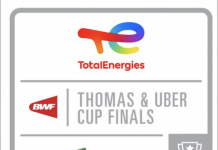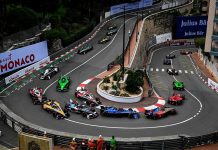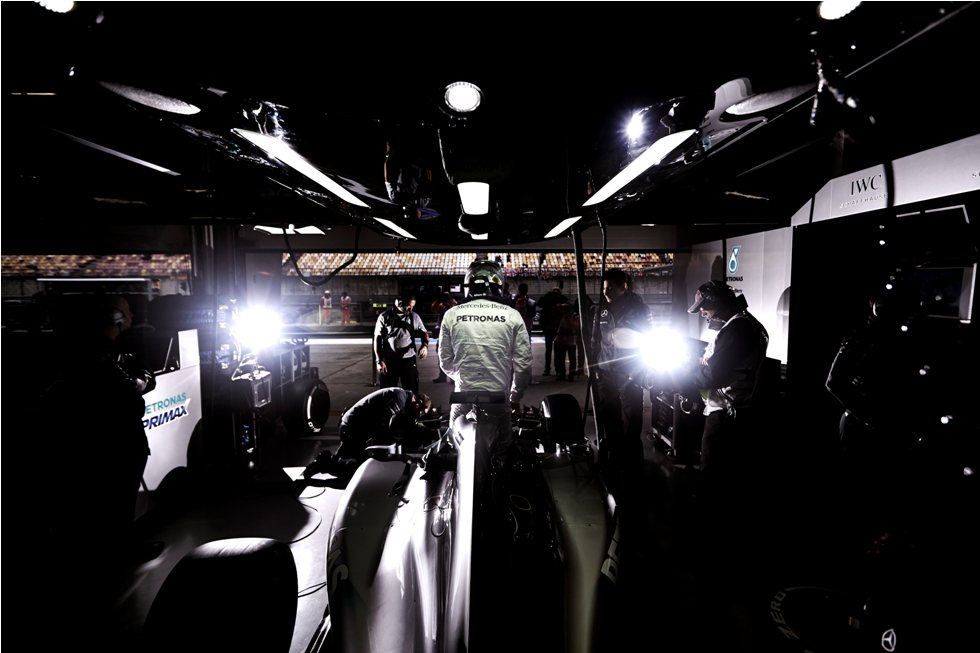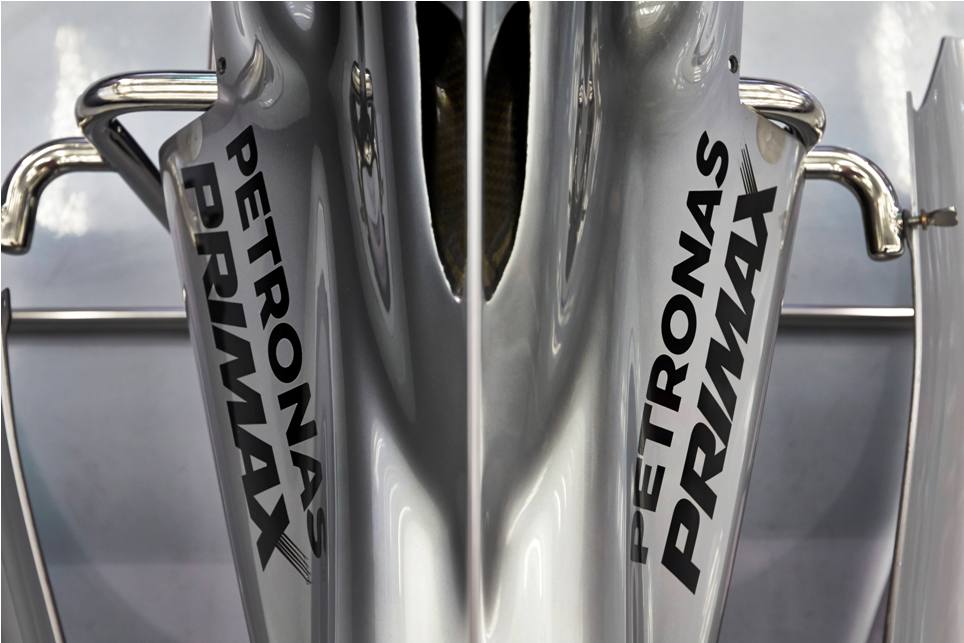Five of the 2014 Formula One World Championship brings us to Barcelona for the Spanish Grand Prix, held at the Circuit de Barcelona-Catalunya.
Driver / Senior Management Quotes
Lewis Hamilton
It´s been good to have a bit of a break between races: for us as drivers and also for the team who have been working flat out for so many weeks. But after three great weekends in Malaysia, Bahrain and China I´m obviously keen to get on to the next one and continue that positive momentum into the next leg of the season. Barcelona is a great place to have the first European round on the calendar. It´s a circuit we all know very well – although this is the first time in my Formula One career that I have raced there without testing at the circuit during the winter – and the Spanish crowds are really passionate about their racing. It´s great to see so many people in the grandstands over the weekend. I´ve never won in Barcelona but I´m in a good place right now and I´m hoping that this will be the year, although it´s clear who the fans´ favourite will be! The circuit is fantastic, our car has performed well so far and I´m really looking forward to a good race.
Nico Rosberg
The Spanish Grand Prix is the first race of the season on European soil after four exciting races at various circuits overseas. This is where the next phase of the season begins and there is probably no other track in the world that I know as well as the Circuit de Barcelona-Catalunya. I also have some good memories of race weekends in Barcelona. Last year, for example, I started from pole position so I´m looking forward to going back there again and maybe repeating that particular feat. It´s also only now that we can slowly begin to get an idea of how the different cars stack up in terms of performance. Each team will have been pushing hard during the break since the last race to find some extra performance from new parts. So it will certainly be an interesting weekend and hopefully an exciting one for the fans too.
Toto Wolff, Head of Mercedes-Benz Motorsport
We are now four races into the 2014 season and hold a strong position in both Championships. However, the first European round of the year always provides a prime opportunity for teams to arrive with improvements to their cars. Of course, we are no different to any other team in that respect and our aim must be to increase the advantage we enjoyed at the last race in China. We have seen already that our rivals are relentless in their efforts to close the gap. As a team, it is up to us to rise to that challenge: to take that relentless mentality to an even greater extent than those around us. If we are to build a sustained level of success in this sport, any small advantage must be seen as a platform upon which to build a bigger advantage. We head to Barcelona on good form and in high spirits. But, most importantly, we approach the next race weekend as we approached the first: in the knowledge that there is still a long season ahead and anything can happen.
Paddy Lowe, Executive Director (Technical)
Barcelona follows the first three-week gap of the season after a near constant testing and racing itinerary since late January. For our trackside personnel in particular, it´s offered some respite and a chance to recharge the batteries for what is going to be a long year with the in-season tests also now on the calendar. The break in on-track action also presents an opportunity to work on the cars and to bring more new parts to the next event than you would see during back-to-back race weekends. Aside from being the first European race of the season, Barcelona is classically seen as the first big milestone for upgrades from the teams and we can expect to see quite a range of developments throughout the pit lane. The circuit itself is highly demanding on the cars: arguably requiring the best combination of power, handling and aerodynamics seen during the entire season. It´s often said that a car which performs well in Barcelona will be a great car for the season, so we´re looking forward to seeing where we stand relative to the competition. There has been no sense of complacency or backing off just because our car has shown strong performance in the opening few races. The objective is to not only match, but to better the development rate of our rivals and to build on our lead in both Championships.
Circuit de Barcelona-Catalunya: The Inside Line
In the Cockpit
Lewis
The lap begins with quite a long straight that also has a DRS zone. It´s really important to find the right braking point for the first corner and to carry a lot of speed through the apex without running too deep into Turn Two. Then you´re straight into Turn Three which is just mega: so much g-force and taken almost flat out during qualifying. Maintaining momentum through the first three corners is crucial.
Depending on wind direction and how strong the front end is on your car, you can quite easily end up with understeer through Turn Four which may make you run quite deep into the corner. Turn Five is then quite a long corner with a bit of a dip through the apex. Good exit speed is essential here for the run down through Turn Six and into Seven. This is where the track starts to climb and continues to do so through Turn Eight, before levelling out through the high-speed Turn Nine and down the back straight.
After another DRS zone it´s heavy braking into the tight left-hander at Turn 10, which is tough on the rear tyres. A quick flick left again through Turn 11 and you´re straight into the right hander at Turn 12. You have to make a ´v´ out of this double apex corner before heading into the complex at the end of the lap.
The final few corners are pretty tricky, as by this stage the rear tyres are quite hot. It´s tough to get the car turned in through the Turn 14 and 15 chicane without having too much oversteer and the exit is absolutely crucial. You´re flat out through the final turn and back into that long DRS straight to start another lap, so this is the place to overtake.
Nico
The first few races of the season are all very different but Barcelona is the first ´normal´ track of the year. Although we know it very well, the demanding layout of the Circuit de Barcelona-Catalunya still makes it quite challenging. The first corner is a key section of track, since it affords a good opportunity to overtake the car in front. Following the longest straight on the circuit, which also features a DRS zone, Turn One is definitely a corner where overtaking is on the cards!
Turn Three, however, is even more exciting from a driver´s perspective. It´s a long, drawn-out corner that in the past has been taken almost at full throttle. We´ll have to see how fast we can run through it this year because, thanks to the rule changes, we now have a lot more power but also much less downforce. Either way, this is one of the best turns of the season as far as I´m concerned and it´s going to be a really thrilling experience to tackle it in these new cars.
One of the special features of this race weekend is that it is the first race of the season in Europe. This marks the return of the team trucks and motorhomes to the paddock. But there is something far more decisive about this race than that. A crucial point in the season is reached at the Spanish Grand Prix where you can begin to determine the performance of your car compared to those of the other teams at the beginning of the summer season, which is an important moment for everyone.
On the Pit Wall
Circuit Style
With the exception of Melbourne, itself different by nature of being a street circuit, the season so far has consisted of some of the more modern circuit designs. These tend to reveal more specific areas of car performance rather than a complete package. Barcelona, by contrast, is very much a more traditional style of race track. Not only is the circuit well-known amongst the teams, it also provides a good reference to how the performance of a car compares to its competitors. It is a true test of a car, requiring a balance of strong aerodynamic, engine and mechanical performance.
Upgrades
Barcelona is one of the major performance upgrade events of the season. Part of the reasoning behind this is that, for flyaway races such as the first four rounds, bringing bulky packages such as floors, bodywork sets and wings is both difficult and expensive. Obviously, every team wants to be as competitive as possible at all times. But there is a balance to find in terms of cost versus performance. Barcelona, therefore, is where we will see teams bringing major package upgrades: fundamental re-workings of their cars as opposed to just individual developments. Where some cars were quite closely matched in performance prior to this race, the first European round of the season will likely see small shifts in performance: moving some teams slightly ahead of others where they perhaps would not have been previously. Furthermore, with four races of the season now complete, rival teams will have had sufficient time to evaluate and attempt to replicate clever design features seen on other cars, be they aerodynamic or mechanical. Combined, these factors are what make Barcelona a significant landmark on the calendar.
Track Surface
The track surface at Barcelona is visibly rippled into Turns One and Ten, the braking zones at the end of each of the main straights. This is a characteristic rarely seen amongst venues on the current calendar and can be attributed to the age of the circuit, as the tarmac has effectively been pulled around over time. This can be felt by the drivers but is also visible from off-board camera footage of certain cars.
Turn Three
Similar, although to a lesser extent, to Turn Eight at the Istanbul circuit, Turn Three at Barcelona is a fantastic, long, sweeping, high-speed corner: rated by drivers as one of the more exhilarating challenges of the year. This is where the base performance of a car really shines through. Good balance, a strong aerodynamic package and manageable levels of tyre degradation are all required to be quick through this corner. With no particular mechanical properties differentiating cars down the straight or through Turns One and Two, Turn Three dominates the opening sector of the lap.
Overtaking
Overtaking has historically been a difficult task at Barcelona and this remains true even with the inclusion of two DRS zones. While there were a notable number of passes made in 2013, this was triggered by significant tyre degradation and a varied range of strategies deployed during the race. Although there are two main straights around the circuit, they are not as long as the last few tracks visited thus far this season. To make a passing manoeuvre stick, the driver must therefore be as close as possible to the car in front exiting the preceding corner. The nature of Turns Nine and Sixteen, the two corners leading onto each straight, makes this a tough task. Both are tricky, high-speed corners where drivers are very much on the edge, making it all too easy for the front end to wash away in the turbulent air of the car in front. Mistakes are often seen as drivers push beyond the limit in an attempt to close the gap through Turn Nine, attempting to pass on the run down to Turn Ten.
Tyres
Barcelona is one of the tougher circuits of the year in terms of tyre degradation, hence the allocation of hard and medium compounds for this event. Turns Three and Nine, in addition to the Turn Seven and Eight combination, put high amounts of energy through the tyres. The abrasive tarmac seen at Barcelona also tears the surface of the tyres a little bit more than normal. These characteristics combine to generate high tyre temperatures, particularly on the left-hand side. With the relatively short straights on offer around the circuit, there is limited time for the energy and temperature within the tyres to be dissipated. Through the tighter sequence of corners towards the end of the lap in particular, the drivers will feel the effect of the tyres overheating, as the continuous sequence of high energy corners which precedes the final sector offers little respite.
Weather
Unlike Melbourne or Shanghai where weather conditions can vary quite significantly from one day to the next, the Barcelona climate tends to remain constant once the weekend is underway. From an engineering perspective this reduces the challenge, as the emphasis on predicting weather patterns for the purpose of optimising cooling packages and tyre preparation is reduced. However, year-on-year temperatures in the region can vary from around 18 to 29 degrees. This presents its own challenge in that, until the teams arrive at the circuit, it can be tough to know what solutions are required to best suit the conditions.




































